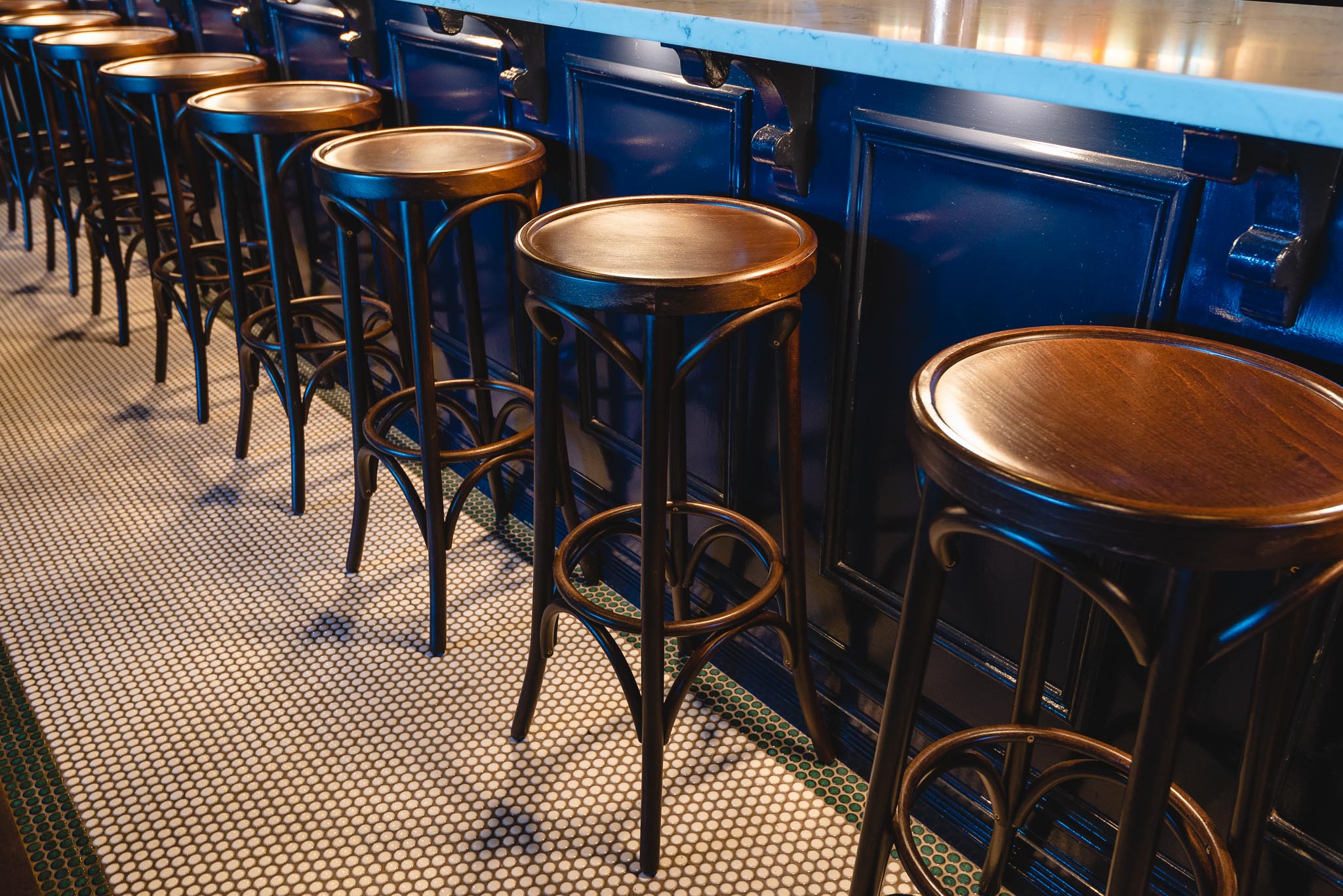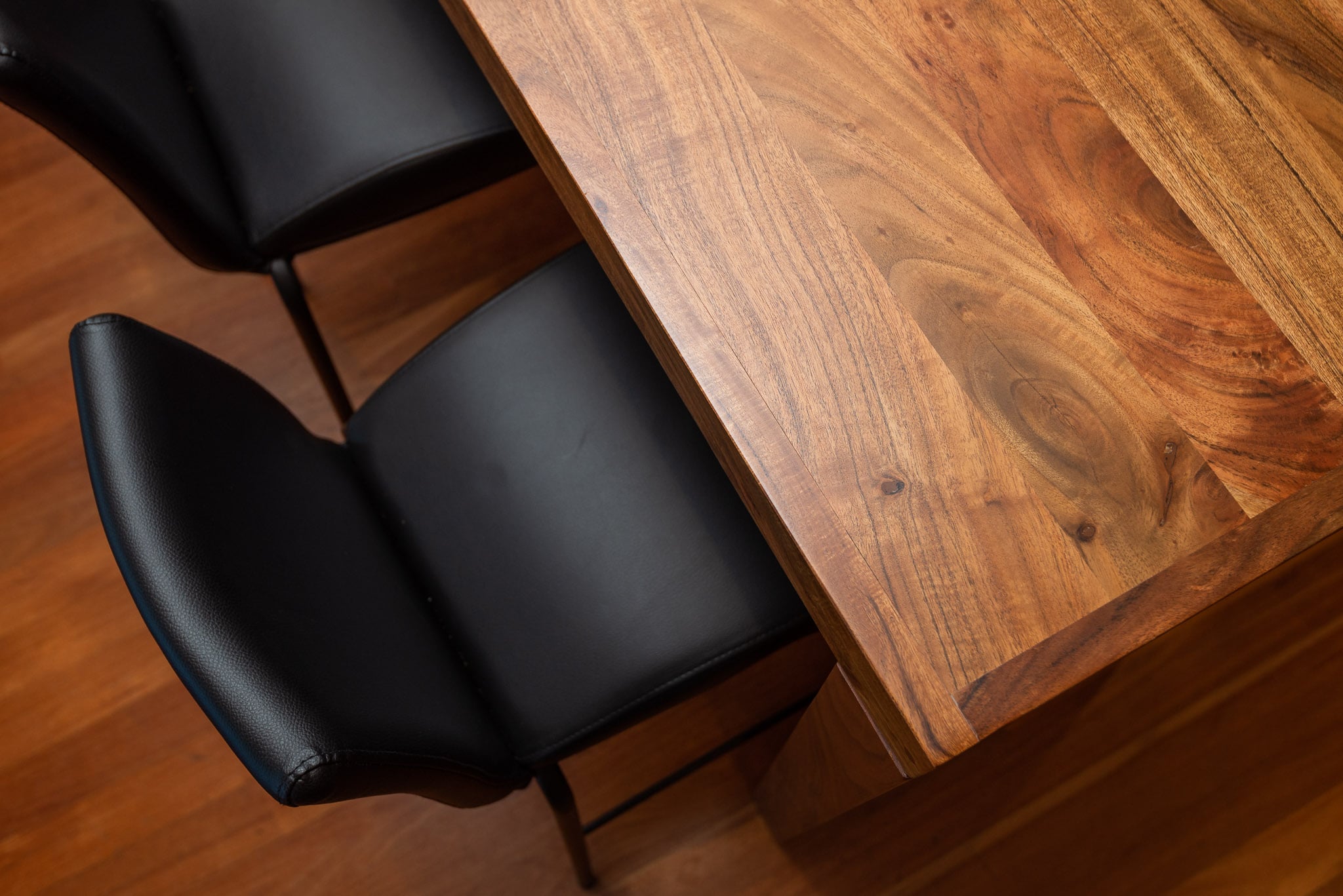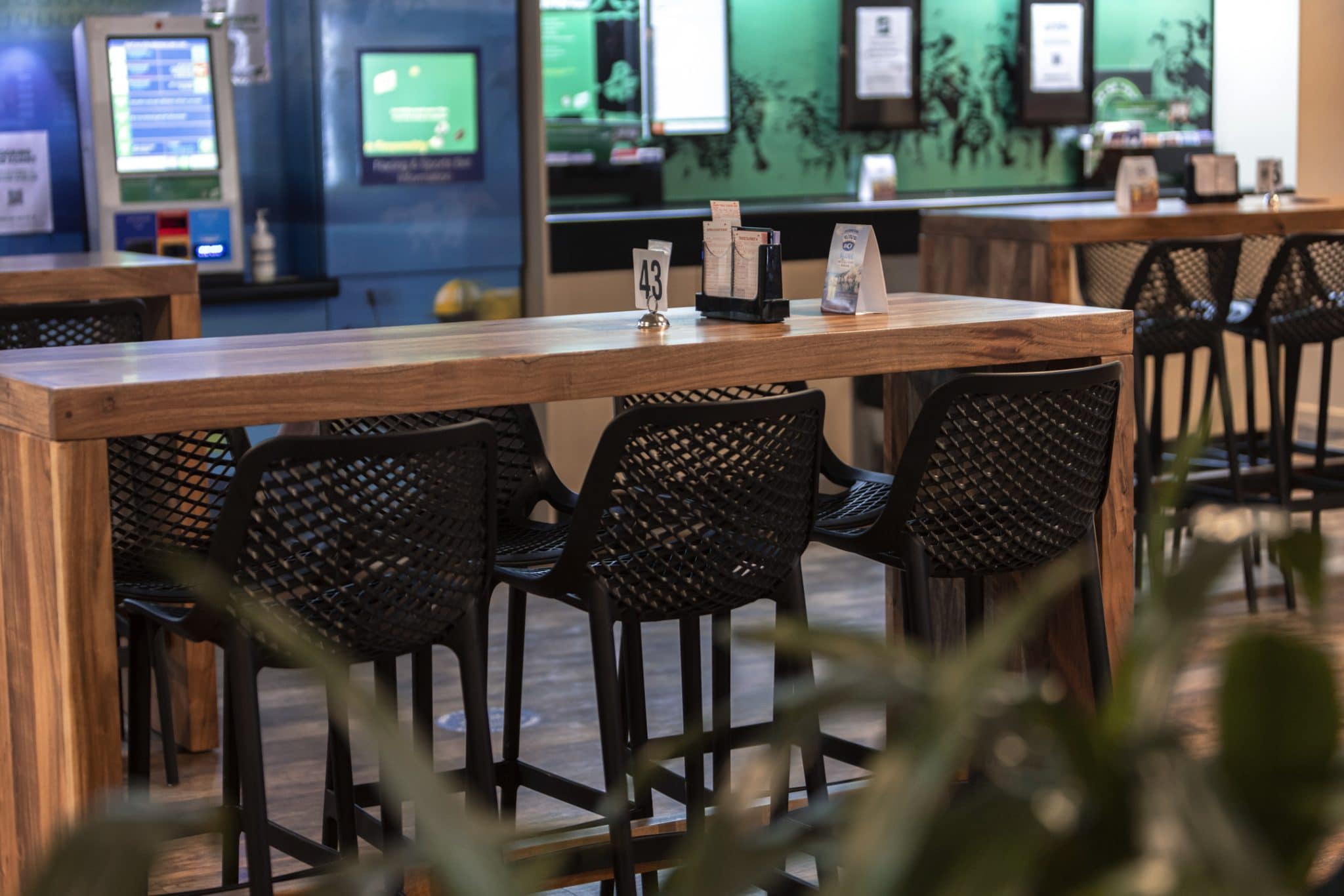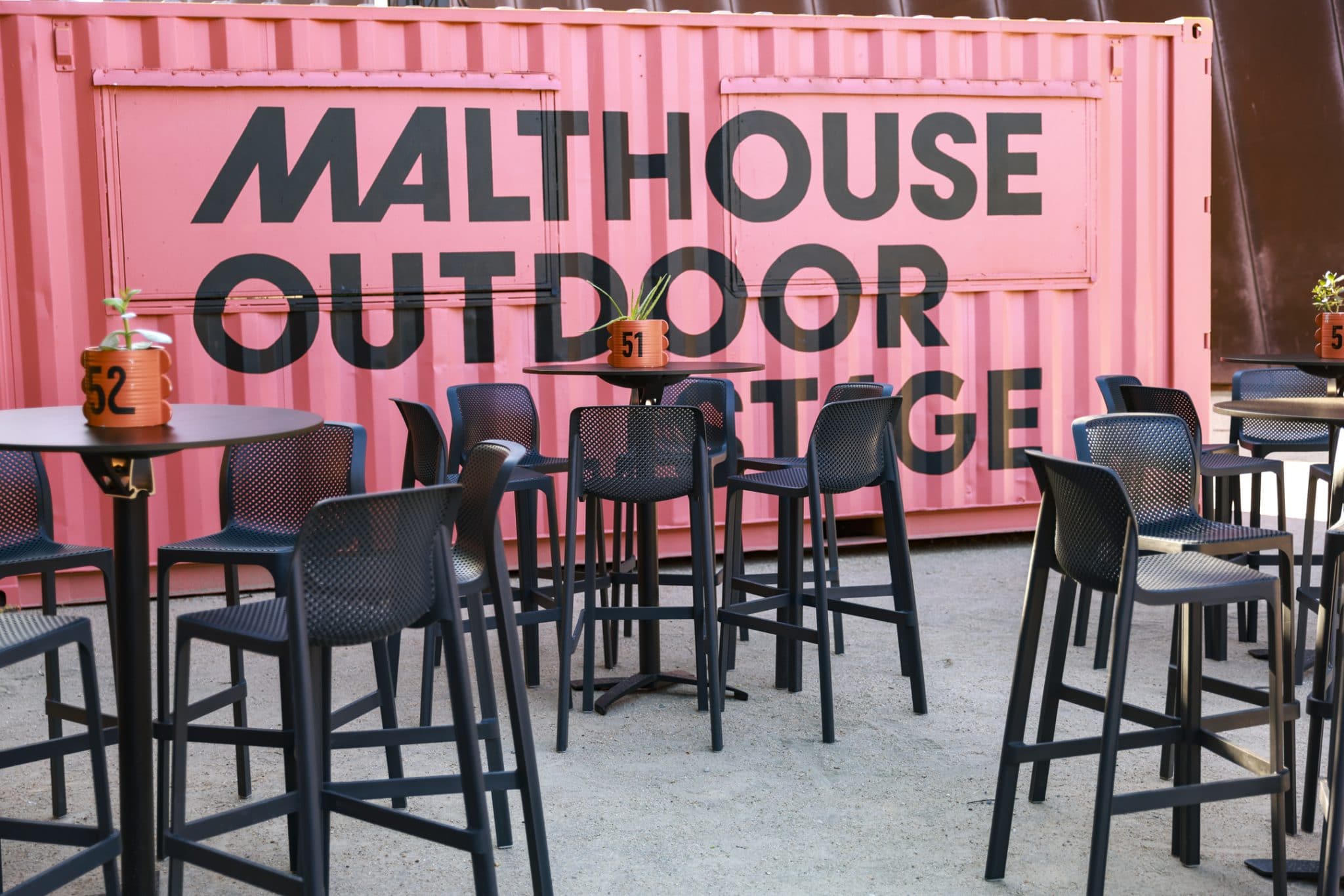If seating your guests in style is what you’re aiming to do, you’ve come to the right place. We understand this may seem like a huge and daunting task – especially if you’re worried about what the venture may cost you.
That is where we come in. We’re here to put your mind to ease and give you a few tips and hints about what you can expect with the cost of bar stools across the industry. Keep reading below to find out more…
There are many things that affect the cost of bar stools across the industry. Many of the reasons are the obvious – material, place of manufacture. However, there are some other factors that affect the cost as well.
How does the material of Bar Stools affect the cost?
When you set about choosing your new bar stools, the materials that the bar stools are made from greatly affect the price you’ll pay. Choosing from the timber or upholstered range will increase the price you pay, while choosing from the polypropylene range will lead you more towards the lower end of the scale. Metal stools will meet you somewhere in the middle.
Timber bar stools in themselves are not all the same price bracket. Depending on the timber that is used, timber stools can vary greatly in pricing. European Beech is the preferred hardwood that is strong, inexpensive and has been used for furniture since the 1800s. European Beech timber is a slow growing tree with a short grain – making it strong and stable, and therefore ideal for furniture. More inexpensive timber chairs will often be made from Rubberwood or Chinese Oak, which is fast growing but not as strong. These timbers are easier to produce, which brings the price of the chair down.

Upholstered bar stools are bound to turn heads and bring in the classic comfort of soft upholstery. However, they are also more towards the higher end of the scale of pricing. The reason for this lies in the frame materials used. While some frames are made from steel, others are made from timber. The manufacturer may change between RHS (Rectangle Hollow Steel) or CHS (Circular Hollow Steel), depending on the style of the stool and this will affect the price of the product. How much the steel is bent and moulded to the shape of the stool will also affect the price. In the instances that timber is used as a frame for a bar stool, the pricing tends to increase. This is because the raw materials that are used are more costly. On a similar line, the material that is used to upholster the seat of the stool will also affect the price you pay. Genuine leather will cost you more than commercial vinyl. However, it isn’t only the frame and upholstery material that pushes upholstered bar stools up in price. The craftsmanship does as well. The more popular bar stools that are rolled off a factory line tend towards the lower end of the scale, while bar stools crafted individually tend to hitch the price up.

Polypropylene bar stools vary in price depending on the design and style. Polypropylene stools are injection moulded; therefore, the more complex designs require more complex moulds – sometimes more than one mould for each stool. With these designs, the sections of bar stools also need to be joined together. Another cost for injection moulding is the finishing off – often after a stools has been pulled from the mould, a razor needs to be run around the edges of the chair to ensure that they are smooth, and no sharp edges are left. Different countries have different levels of standards and therefore chairs that originate from countries with lower standards will be cheaper due to the lesser costs with manpower and the quality of the moulds and polypropylene used.

The term Metal loosely defines bar stools made entirely of any metal material. These stools can be made from mild steel, aluminium, brass and sometimes, although rarely, from stainless steel. As with almost any product, the more details in the design, the more the design will cost. Finishes such as chroming, galvanising and powder coating all add to the price of the stool. A bar stool that is polished or powder coated, rather than chromed or galvanised will be a lesser cost that those using the latter finishes. Brass stools are rare because of the costs associated with them. They are far more costly than a mild steel or aluminium stool. Each new weld not only adds strength, but also cost to the bar stool, and the more complex the design of the stool, the more welding there is on the stool.
Do the manufacture origins affect the price of Bar Stools?
The biggest difference you will see across the industry with pricing will relate to the origin of the bar stool. Different countries use different methods of production and often have varying standards of quality, which all affect the price that you will pay for the chairs.
Often Bar Stools of Asian origin come at a lower cost due to being mass-produced in a factory with minimal costs and lower standards of quality. These warehouses produce masses of products daily with little attention paid to the quality produced. The bar stools are produced at a lower cost and therefore are often further towards the lower end of the pricing spectrum.
Typically, European manufacturers maintain tight quality control and therefore produce less products at a higher quality and, therefore, cost. European manufacturers often descend from a line of craftsmen who take pride in their work and pass their tricks of the trade down through their families. They’re experienced craftsmen whose workmanship is that of hand-crafted quality.
How does the brand of my Bar Stools affect the cost?
All industries, whether they be clothing, cars, or furniture, have a brand hierarchy. As with every branded item out there, the top brands of furniture themselves might look amazing and be made to an excellent standard of quality, but you are paying for the brand and badge as well.
Furniture created by boutique designers is beautiful and made to an excellent standard. The craftsmanship and style can’t be faulted, but the price tag doesn’t reflect only this, but also the badge that the stools carry. Every designer bar stool pays royalties to their designer and can therefore demand a higher price due to the name attached to the stool.
Middle of the range furniture that doesn’t sport a brand badge, but still offers quality, style, and comfort at a fair price. These mid-range chairs tend to be the option that most go for. These stools offer us the reliability we want, withstanding the environment they’re placed in. They also offer comfort and style to the venues they grace, at a very reasonable price.
Then at the base of the brand hierarchy, there are the replica stools that are dime-a-dozen and created expressly to sell quickly with little thought as to the quality of the bar stool itself. The standard of these stools is low and unfortunately, they mostly need to be replaced far too quickly.
Does the style of my Bar Stool affect the cost?
Whilst we want to encourage you to maintain your theme and style across your venue, certain styles do come with an extra cost. With all the bar stools available, there are multiple style features that add to the price that you will pay.
For example, are you looking at bar stools with a back or without one? For obvious reasons, bar stools with a back will cost you more. They require more materials and labour, and therefore will cost you more to purchase.

Similarly, the height of the bar stool you choose will also affect the price. As a company that provides commercial grade furniture to the hospitality industry, we would always recommend you purchase furniture that is commercial grade. This does mean a change in the height of your stools. Domestic bar stools are lower than a commercial bar stool and therefore will cost less.
Other features, such as gas lift or the ability to swivel will also add to the price you pay. Often gas lift stools are seen more in the domestic sector, however they can be used commercially and will cost you more than a stationary stool. On the same note, a swivel stool is also more domestic and tends to be even more costly than a gas lift stool, and most definitely more costly than a standard stool.
If you’re wanting to go the other way and not have your stools move at all, you can opt for fixed stools. These are bar stools that are concreted or bolted into the ground. Doing this will prevent your stools from flying away in the wind, however it will also add to the cost of your stools.
Other than these extra features, you can pay more for design extras – such as hand-crafted detailing on timber stools or custom-made products. Custom stools are beautiful and are made to fit right into your venue, however they tend to be a lot more costly than a stocked bar stool. This is due to the locally sourced raw materials and labour that is used to manufacture the stool.
So now this is where we leave you to make your decision. Will you look for something of quality that will fit right in with your venue style, or will you opt for something a little cheaper that may not be of the best quality. The choice is yours! If you’re having some trouble making this decision and you’d like to see some furniture for yourself, give us a call and speak with one of our consultants today!
Happy furniture shopping!
If you would like to see what high quality restaurant furniture looks like, come and see us at one of our showrooms in Melbourne, Perth and Sydney.